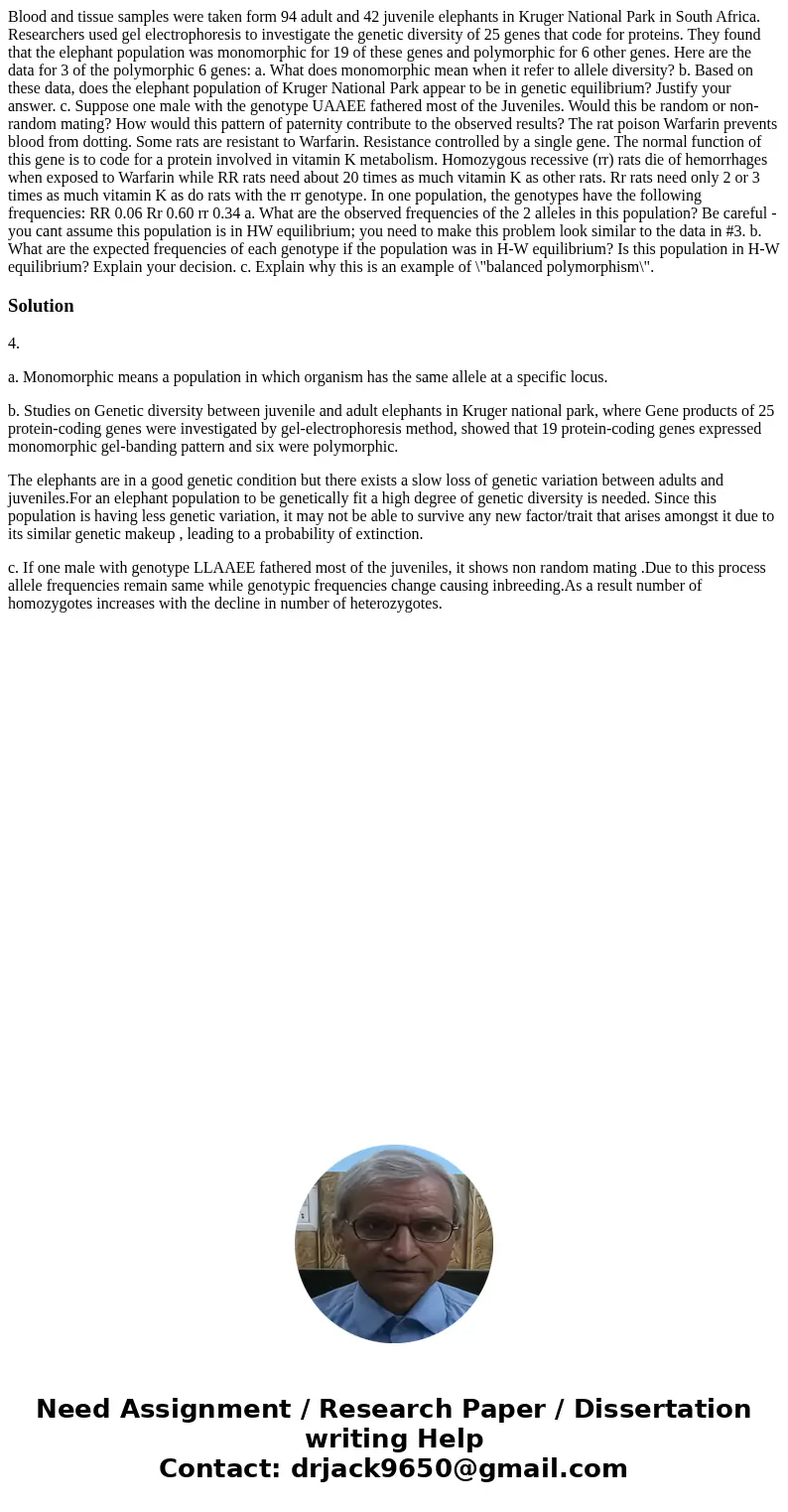Blood and tissue samples were taken form 94 adult and 42 juvenile elephants in Kruger National Park in South Africa. Researchers used gel electrophoresis to investigate the genetic diversity of 25 genes that code for proteins. They found that the elephant population was monomorphic for 19 of these genes and polymorphic for 6 other genes. Here are the data for 3 of the polymorphic 6 genes: a. What does monomorphic mean when it refer to allele diversity? b. Based on these data, does the elephant population of Kruger National Park appear to be in genetic equilibrium? Justify your answer. c. Suppose one male with the genotype UAAEE fathered most of the Juveniles. Would this be random or non-random mating? How would this pattern of paternity contribute to the observed results? The rat poison Warfarin prevents blood from dotting. Some rats are resistant to Warfarin. Resistance controlled by a single gene. The normal function of this gene is to code for a protein involved in vitamin K metabolism. Homozygous recessive (rr) rats die of hemorrhages when exposed to Warfarin while RR rats need about 20 times as much vitamin K as other rats. Rr rats need only 2 or 3 times as much vitamin K as do rats with the rr genotype. In one population, the genotypes have the following frequencies: RR 0.06 Rr 0.60 rr 0.34 a. What are the observed frequencies of the 2 alleles in this population? Be careful - you cant assume this population is in HW equilibrium; you need to make this problem look similar to the data in #3. b. What are the expected frequencies of each genotype if the population was in H-W equilibrium? Is this population in H-W equilibrium? Explain your decision. c. Explain why this is an example of \"balanced polymorphism\".
4.
a. Monomorphic means a population in which organism has the same allele at a specific locus.
b. Studies on Genetic diversity between juvenile and adult elephants in Kruger national park, where Gene products of 25 protein-coding genes were investigated by gel-electrophoresis method, showed that 19 protein-coding genes expressed monomorphic gel-banding pattern and six were polymorphic.
The elephants are in a good genetic condition but there exists a slow loss of genetic variation between adults and juveniles.For an elephant population to be genetically fit a high degree of genetic diversity is needed. Since this population is having less genetic variation, it may not be able to survive any new factor/trait that arises amongst it due to its similar genetic makeup , leading to a probability of extinction.
c. If one male with genotype LLAAEE fathered most of the juveniles, it shows non random mating .Due to this process allele frequencies remain same while genotypic frequencies change causing inbreeding.As a result number of homozygotes increases with the decline in number of heterozygotes.

 Homework Sourse
Homework Sourse